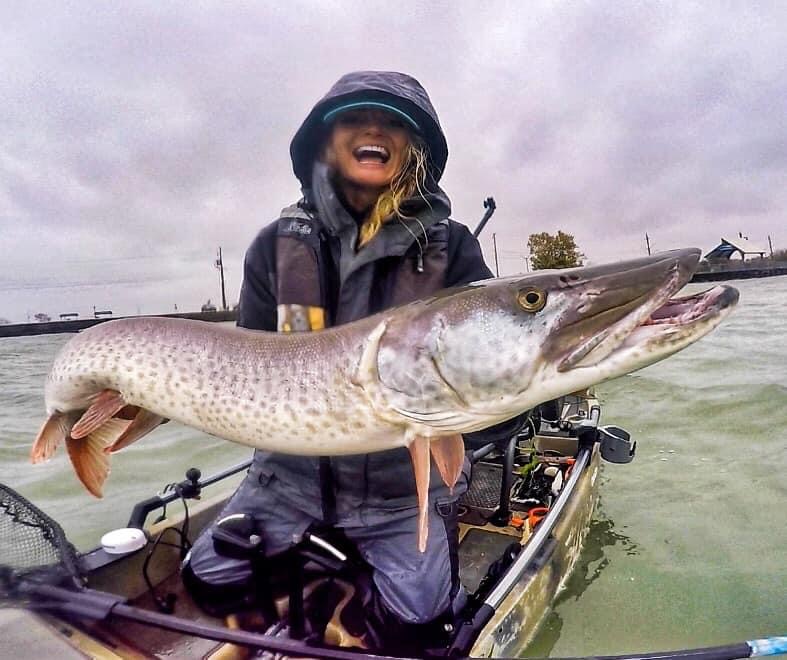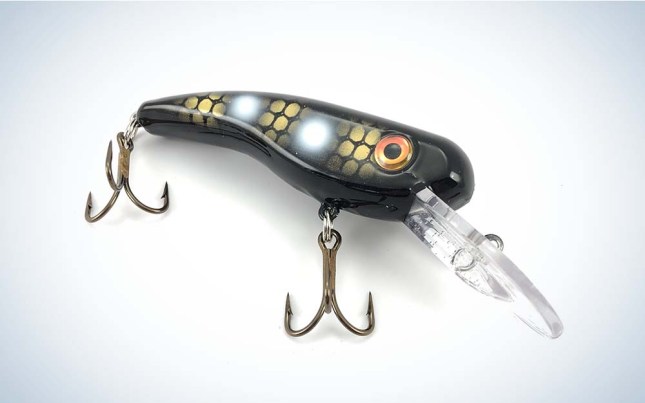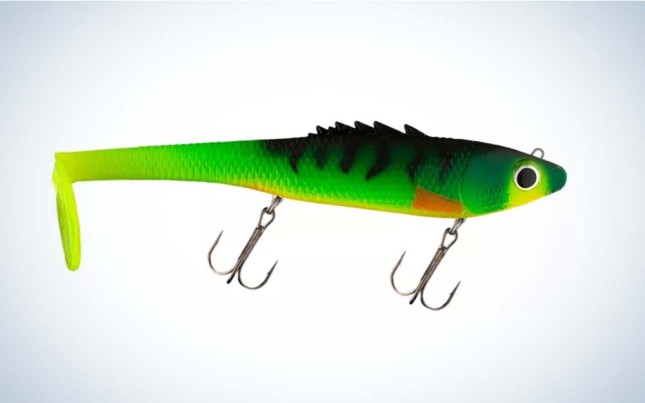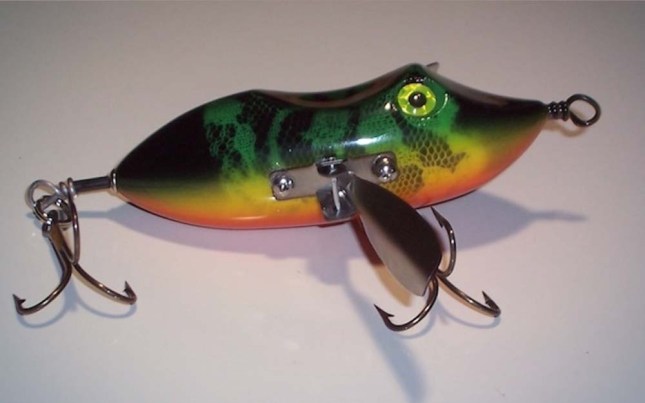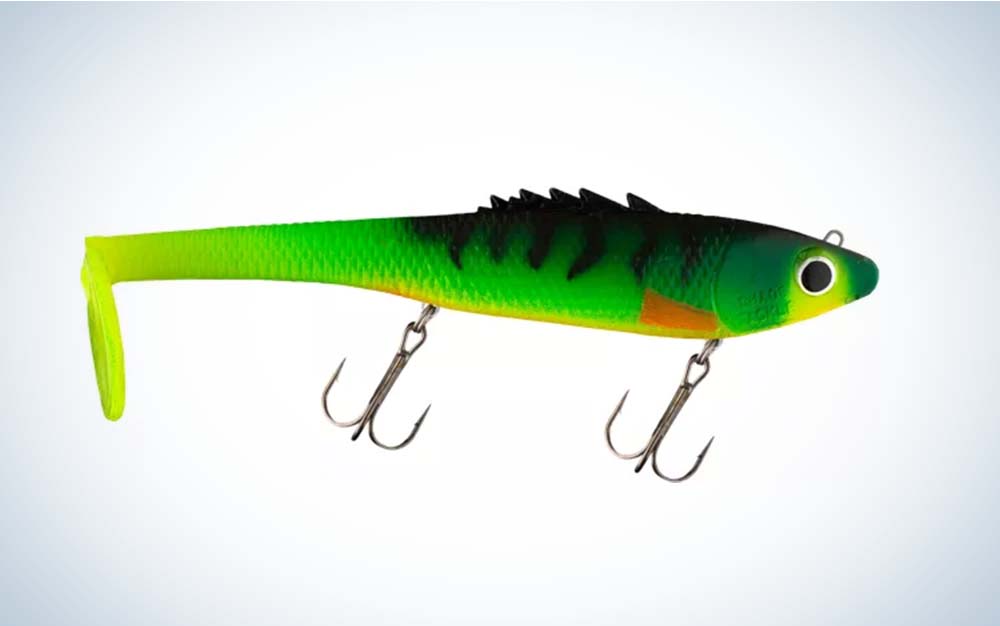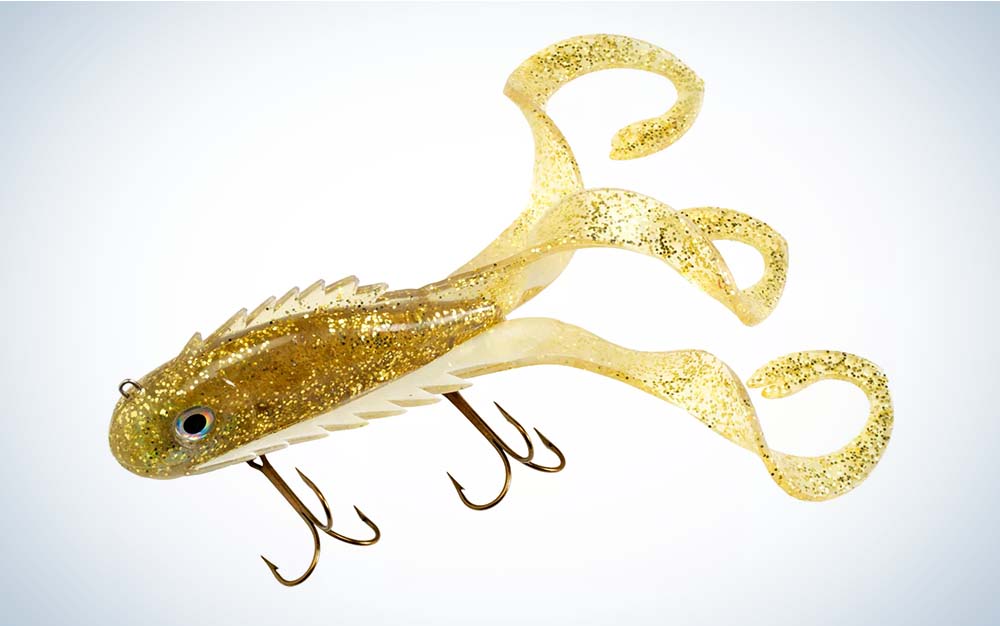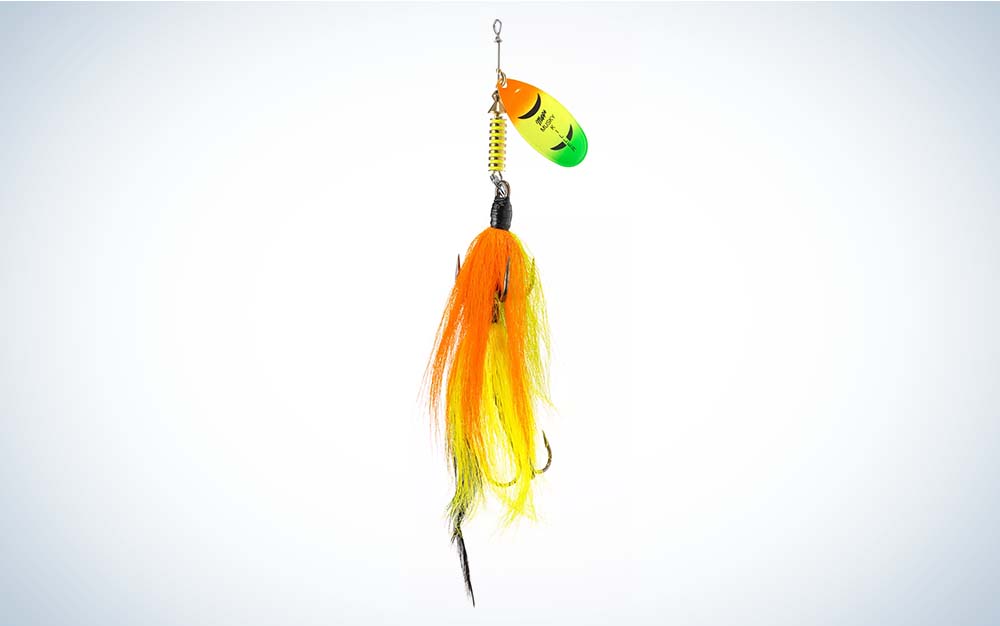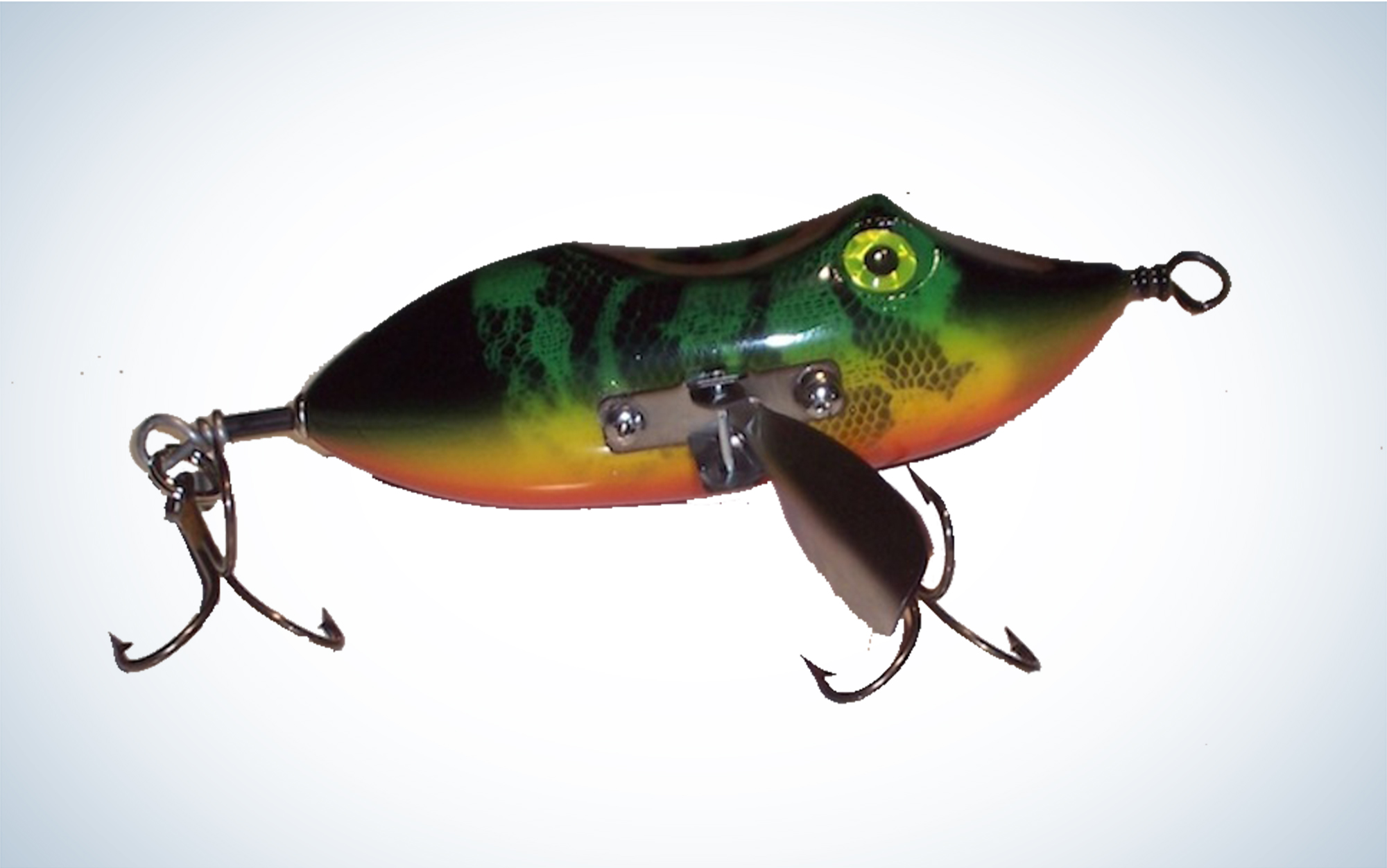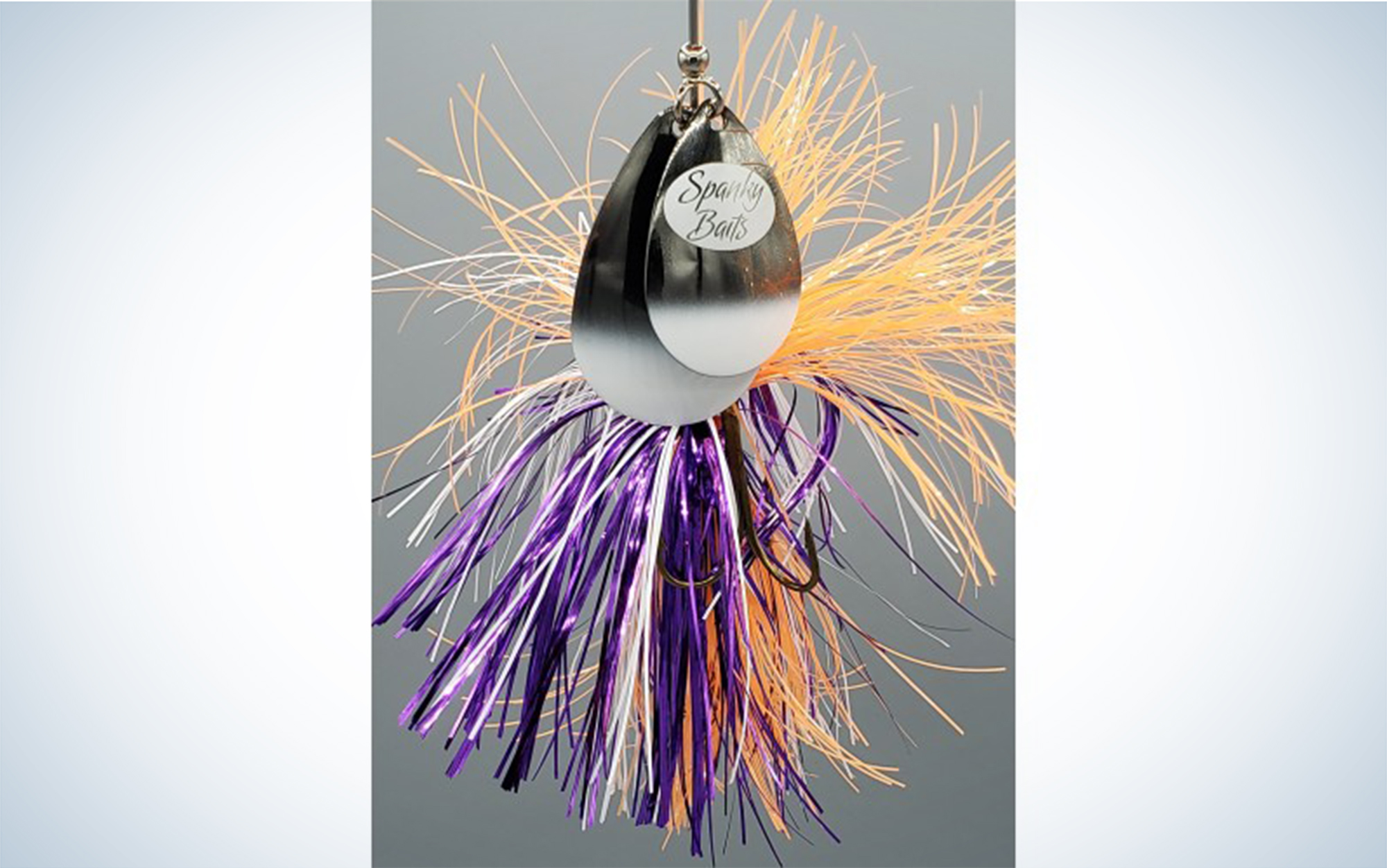We may earn revenue from the products available on this page and participate in affiliate programs. Learn More ›
Most anglers don’t know what to think when they walk into a musky shop and are greeted with rows upon rows of strange-looking lures ranging in size, shape, and color. From massive rubber swimmers with multiple tails, to what look like bass jigs on steroids, musky baits are fascinating. A passionate angler can spend a lot of time and money in a tackle shop and still not select the correct lures.
- Best Paddle Tail: Chaos Tackle Posseidon
- Best Big Rubber Bait: Chaos Tackle Medussa
- Best “Downsize” Bait to Get Bit: Mepps Musky Killer Lure
- Best Crankbait: Llungen Lures .22 Short
- Best Surface Lure: Bitten Tackle Creeper
- Best Bucktail: Spanky Baits 89 FireBomb BuckTail
How We Tested the Best Musky Lures
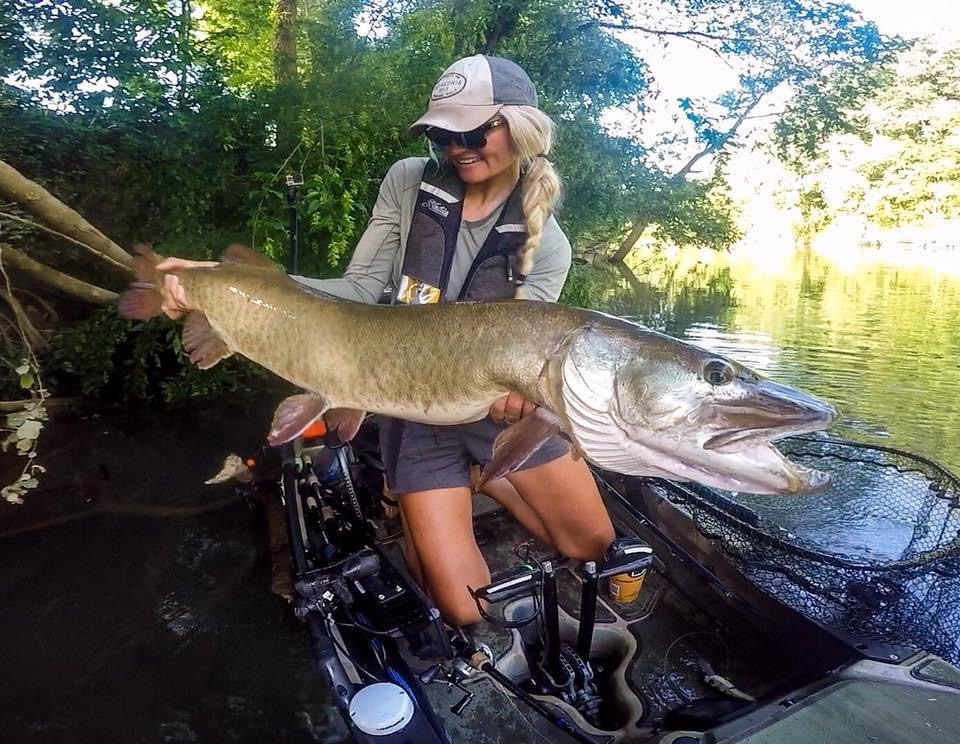
I’ve put in well over the prerequisite 1,000 casts to catch musky and I’ve learned what lures consistently produce. I chose lures that work throughout the year and in variety of water depths, so that no matter where you’re fishing, there’s a lure that will work.
I’ve been fishing for muskies for many years and have narrowed down the list of best musky lures to these models. Here’s why you should have them in your tackle box—and when and how to use them.
The Best Musky Lures: Reviews & Recommendations
Best Musky Paddle Tail: Chaos Tackle Posseidon
Key Features
- Length: 10 or 12 inches
- Weight: 6.4 and 8.8 ounces
- Colors: Large variety offered
Pros
- Easy to fish
- Pre rigged
- Versatile
Cons
- Not weedless
This big paddle tail has the full body wobble of a crankbait, but the head almost moves independently from the large paddle tail, which gives the bait a one-of-a-kind action. It’s particularly user-friendly for new musky anglers because for the most part, you’re fishing this bait with a straight retrieve. Occasionally, I will do a quick burn and pause so the bait darts to the side, often triggering aggressive bites. This bait allows anglers to fish various depths, as it can be quick-retrieved in the shallows, or slow rolled in deeper water. It can be trolled or cast.
The Posseidon is effective year-round, but this is one of the best fall musky lures. The fish are typically feeding big late fall into winter, and the Posseidon is ideal for that time period. My go-to colors include White, Sucker, Custom Eel Pout, Custom Jays Fire Perch, Clown, and Hot Perch.
Best Big Rubber Bait: Chaos Tackle Medussa
Key Features
- Length: 9 and 17 inches
- Weight: 3.2 or 13.5 ounces
- Colors: Large variety
Pros
- Lots of vibration
- Versatile
Cons
- Not weedless
The Medussa is a versatile rubber bait that has put big muskies in the net all across the country. I prefer this bait over a lot of other big rubber lures because of the variety of ways you can fish it. I’ve had success ripping this bait out of grass, popping it out deep, sweeping it, straight-retrieving it, and slow-rolling it. The triple tail on this bait gives it lots of life and vibration to get the fish’s attention and commitment.
The Medussa is offered in eight different sizes, from the mini Medussa to the monster Medussa for the extra big appetite.
My top patterns are Black and Orange, Lemontail, White, Sucker, Custom Fire Walleye, FireTiger, and Cisco. With the good size variety, you can fish this bait year round. I have had my best success in the fall.
Best “Downsize” Bait to Get Bit: Mepps Musky Killer Lure
Key Features
- Length: 7 ½ inches
- Weight: ¾ ounce
- Large color selection
Pros
- Good hook-up ratio
- Proven design
- Smaller blades won’t tire you out
Cons
- Not as much vibration as bigger bladed bucktails
When muskies are following but won’t commit, sometimes it pays to downsize. This Musky Mepps bucktail has been a tried and true, proven fish catcher for decades. It features a small, single blade that allows anglers to burn this bucktail quickly without fatiguing, or it can be fished slow. The 5/0 single treble hook boasts an excellent hook up ratio.
I like to keep it simple with colors, as Red/Silver, Black/Silver, Yellow/Black, and Silver/Brown can get the job done in about any environment. One of the things that really makes this small bucktail work is the ability to ramp up the retrieval speed, triggering fish to bite.
Best Musky Crankbait: Llungen Lures .22 Short
Key Features
- Length: 5.25 inches
- Weight: 1 ounce
- 20 color patterns
Pros
- Good size for getting bites
- Runs 6- to 16-feet deep
Cons
- Not weedless
- Can catch non-target species
This small crankbait is arguably one of the best cranks on the market for muskies. It is one of the best musky crankbait if you want to use your trolling motor to cover water, but is also effective casting. When muskies are relating to laydowns or rock piles, aggressively bumping this bait against the cover and picking apart the structure is a great way to put fish in the boat. This bait has a unique wobble and is the perfect “snack” size to get these fish to eat. They also offer this crank in a square bill and a .22 long size to give anglers more of a size and depth variety.
This crank can be fished year-round, but I find it really shines in the early spring into summer when fish are eating a little smaller bait and up shallow. My go-to color patterns are Brushed Perch, Walleye 2.0, Lemonhead, Black Perch, and Canadian Crush.
Best Surface Lure: Bitten Tackle Creeper
Key Features
- Length: 5.5 inches
- Weight: 2.7 ounces
- Five color patterns
Pros
- Unique sound
- Excellent walking action
Cons
- Not great for summer
A lot of anglers throw prop-style topwaters, this slower paced creeper offers a different sound that muskies often can’t resist. The Bitten Tackle Creeper is very simple to fish, and anglers don’t tire as much fishing this bait because it requires a much slower retrieve. Because you can fish it slowly, it gives those long clackers extra time to do their job of slowly driving the fish mad enough to eat. It’s one of the best musky surface lures you can fish.
Topwater baits typically shine for me from late spring to early fall, when water temps are at least 60 degrees. I’ve had luck fishing these all day on overcast days, but are great dawn and dusk baits for all conditions. I stick with the black/orange and duck patterns.
Best Bucktail: Spanky Baits 89 FireBomb BuckTail
Key Features
- Length: 8 inches
- Weight: 2.6 ounces
- Large color selection
Pros
- Easy to fish
- Lots of vibration
Cons
- Tiring to fish
The best Bucktails come in many different configurations, but this Spanky Baits 89 has always been a favorite. It features one mag 8 blade and one Colorado size 8 blade to give this bait that staggered vibration that fish don’t see every day. It is one of the most effective search baits when you’re trying to eliminate water, and though burning blades can get tiring, this one is user friendly as it’s a typical straight retrieve. I will often add a big grub tail to this bait to give it just a bit more life.
As far as colors, I like Napalm Perch, Black Smoke, Black Flo Green, Black/Gold Smoke, and Bluegill. You can fish blades year-round and catch fish on them even in frigid cold temps, but I have found that they have worked best when water temps are from the mid 60s to the low 70s.
Things to Consider Before Buying the Best Musky Lures
Many musky lures are big, but anglers will sometimes overthink size. You don’t always have to go big to get bit big. I always try to match the forage when it comes to size and color. If the muskies are feeding on schools of small perch or crappie, I will grab a small crankbait or a small bladed bait, depending on the depth of the fish and the vegetation.
When it comes to the time of year, there are always guidelines to follow as far as what baits work best in the spring versus in the fall. But nothing is absolute in fishing, and it pays to experiment. I’ve thrown blades in the winter and caught some of my biggest fish, just as I’ve thrown big rubber in the spring and have been handsomely rewarded. If something isn’t working and you’re in an area you know holds fish, change it up. Try the same bait, but fish it and retrieve it differently, or change baits all together.
READ NEXT: Fish of 10,000 Casts: Why Muskies Are So Hard to Catch
FAQs
Things can really “heat up” in the summer, including the musky action. Muskies will seek out cooler water and can lurk around deep cabbage lines and offshore humps and points that are close to deep water. In rivers, muskies will take refuge in the deep, cooler troughs or they will move up spring fed creeks. Keep a close eye on water temps, as it’s a good rule to lay off targeting them when temps exceed 75 degrees, due to high mortality rates.
They are known as the “fish of 10,000 casts,” but some lucky anglers have caught multiple fish on their first outing. Most anglers consider having just one “interaction” with a fish, whether this be an eat or a follow, to be a normal day. Time of day, moon phase, conditions, and location can all factor in when it comes to having success. However, the more time you spend on the water learning their habits, the better musky angler you become.
Does the sun rise? Just like most freshwater predators, a musky will absolutely eat top water. There are definitely more productive times of the year and time of day to throw top water, but one should never rule out a big plopper, prop, or walking style top water bait. Good areas to throw top waters include shallow weedy bays, around laydowns and shorelines, shallow bars, and even offshore if you see muskies feeding on suspended bait.
Final Thoughts on the Best Musky Lures
Whatever musky lure you go with, keep casting. They call muskies the fish of 1,000 casts for a reason, and it’s all too easy to get discouraged chasing these elusive predators. It’s no secret that anglers who have the most success are the ones who spend the most time on the water. Fish can be caught on post frontal days and outside of the major or minor moon phases. Anglers just have to discipline themselves to stay focused—and keep chucking and winding.
- Best Paddle Tail: Chaos Tackle Posseidon
- Best Big Rubber Bait: Chaos Tackle Medussa
- Best “Downsize” Bait to Get Bit: Mepps Musky Killer Lure
- Best Crankbait: Llungen Lures .22 Short
- Best Surface Lure: Bitten Tackle Creeper
- Best Bucktail: Spanky Baits 89 FireBomb BuckTail
